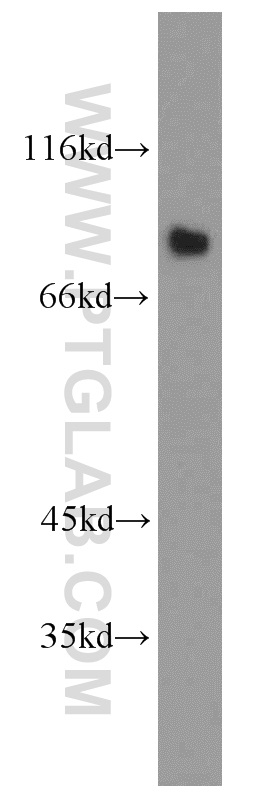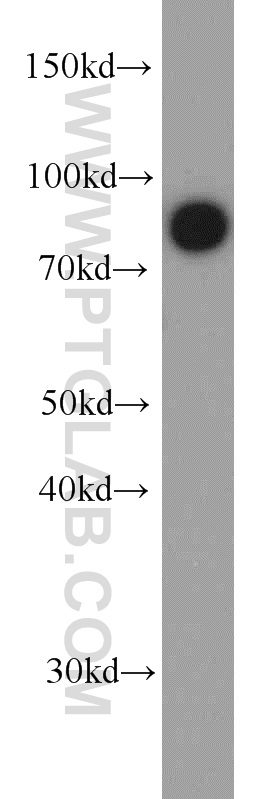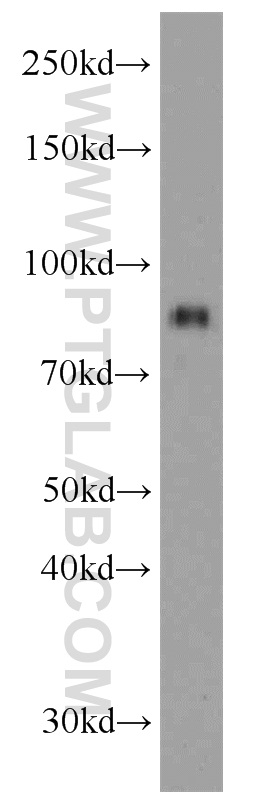LINGO1 Polyclonal antibody
LINGO1 Polyclonal Antibody for WB, ELISA
Host / Isotype
Rabbit / IgG
Reactivity
human, mouse, rat
Applications
WB, ELISA
Conjugate
Unconjugated
验证数据展示
经过测试的应用
| Positive WB detected in | mouse brain tissue, rat brain tissue |
推荐稀释比
| Application | Dilution |
|---|---|
| Western Blot (WB) | WB : 1:500-1:2000 |
| It is recommended that this reagent should be titrated in each testing system to obtain optimal results. | |
| Sample-dependent, Check data in validation data gallery. | |
产品信息
19097-1-AP targets LINGO1 in WB, ELISA applications and shows reactivity with human, mouse, rat samples.
| Tested Applications | WB, ELISA Application Description |
| Tested Reactivity | human, mouse, rat |
| Immunogen | LINGO1 fusion protein Ag13553 种属同源性预测 |
| Host / Isotype | Rabbit / IgG |
| Class | Polyclonal |
| Type | Antibody |
| Full Name | leucine rich repeat and Ig domain containing 1 |
| Synonyms | LERN1, LINGO1, LRRN6A, UNQ201 |
| Calculated Molecular Weight | 70 kDa |
| Observed Molecular Weight | 83 kDa |
| GenBank Accession Number | BC011057 |
| Gene Symbol | LINGO1 |
| Gene ID (NCBI) | 84894 |
| RRID | AB_10638484 |
| Conjugate | Unconjugated |
| Form | Liquid |
| Purification Method | Antigen affinity purification |
| UNIPROT ID | Q96FE5 |
| Storage Buffer | PBS with 0.02% sodium azide and 50% glycerol pH 7.3. |
| Storage Conditions | Store at -20°C. Stable for one year after shipment. Aliquoting is unnecessary for -20oC storage. |
背景介绍
实验方案
| Product Specific Protocols | |
|---|---|
| WB protocol for LINGO1 antibody 19097-1-AP | Download protocol |
| FC protocol for LINGO1 antibody 19097-1-AP | Download protocol |
| Standard Protocols | |
|---|---|
| Click here to view our Standard Protocols |


